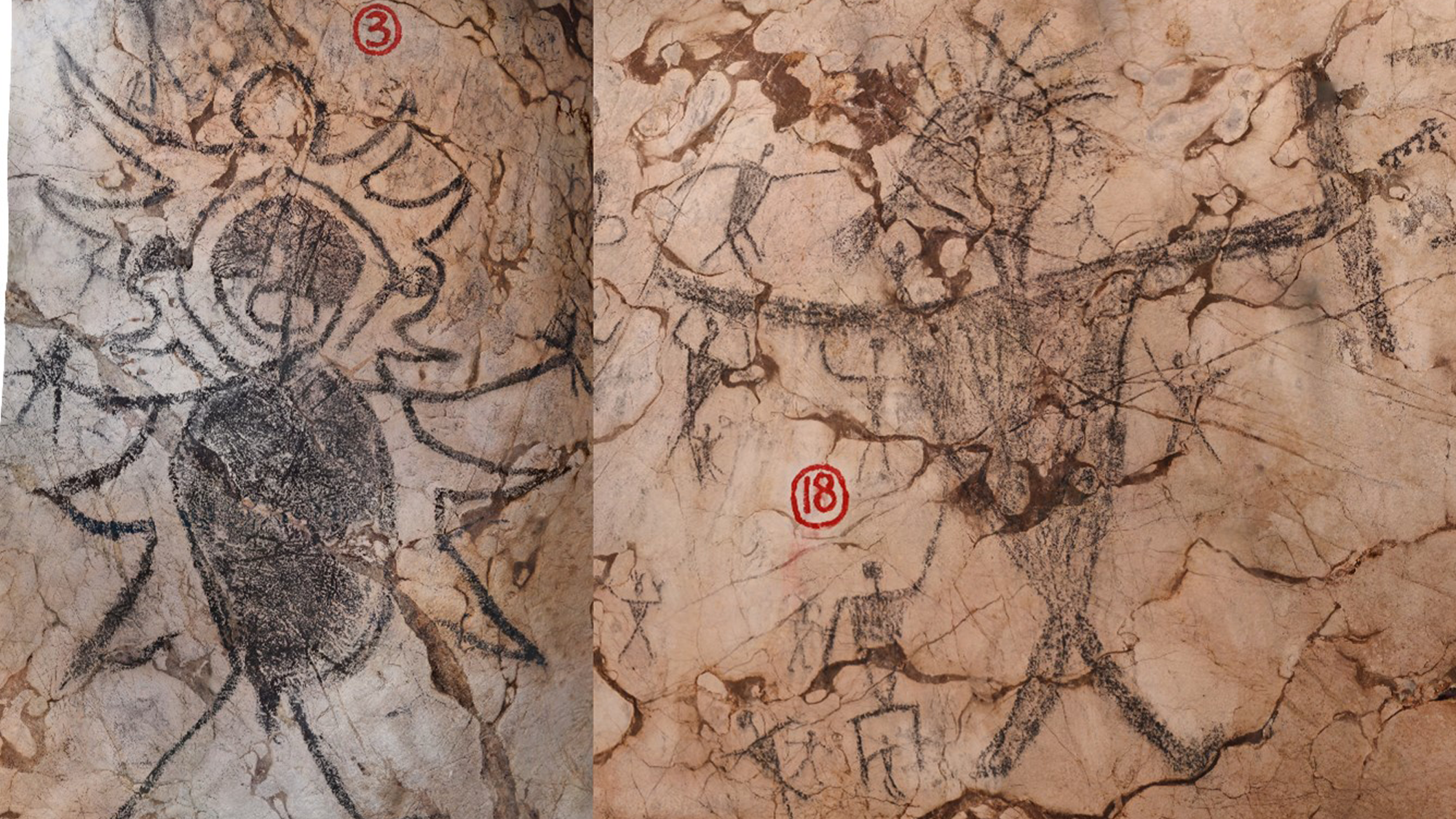

The Gua Sireh Cave on the island of Borneo in the Malaysian state of Sarawak is known for hundreds of charcoal drawings lining the walls of its main chambers. Now, a team of researchers from Australia’s Griffith University, the Sarawak Museum Department, and the Bidayuh people have officially dated some of the drawings in the cave which tell a sad and true story. The findings are detailed in a study published August 23 in the journal PLOS One.
[Related: Neanderthals were likely creating art 57,000 years ago.]
The team dates the drawings to between 1670 to 1830 CE, which corresponds with a time of increasing conflict in the region. By the early 19th century, Sarawak was a loosely governed territory under the Brunei Sultanate. The Bruneian Empire only had authority along the coastal regions of Sarawak. These regions were held by semi-independent Malay leaders. The ruling Malay people controlling the area exacted heavy tolls on the area’s indigenous hill tribes, including the Bidayuh.
“The Bidayuh recall Gua Sireh’s use as a refuge during territorial violence in the early 1800s when a very harsh Malay Chief had demanded they hand over their children,” Mohammad Sherman Sauffi William, a Bidayuh descendent, Sarawak Museum curator, and co-author of the study said in a statement. “They refused and retreated to Gua Sireh, where they initially held off a force of 300 armed men trying to enter the cave from the valley about 60 meters [196 feet] below.
After two Bidayuh were shot and seven were taken as prisoners and/or enslaved, most of the tribe escaped through a passageway at the back of the largest entrance chamber to the cave, which leads through the Gunung Nambi limestone hill, according to Sauffi William.
“The figures were drawn holding distinctive weapons such as a Pandat which was used exclusively for fighting or protection, as well two short-bladed Parang Ilang, the main weapons used during warfare that marked the first decades of white rule in Borneo,” Sauffi Wiliam said.
The art in Gua Sireh is just one part of a wider distribution of drawings found from the Philippines through Southeast Asia, across Borneo and Sulawesi to Peninsular Malaysia. They are believed to be associated with the diaspora of Austronesian speaking peoples. Previous dating work established that similar drawings in the Philippines were made as early as 3500 and 1500 BCE in southern Sulawesi.
[Related: Cave drawings from 20,000 years ago may feature an early form of writing.]
To the best of their knowledge, the latest radiocarbon dates are the first chronometric age determinations for Malaysian rock art. Their first step in this process was establishing what substance was used to create the cave drawings.
“Black drawings in the region have been made for thousands of years,” study co-author and Griffith University archaeological scientist Jillian Huntley said in a statement. “We wanted to confirm the images were drawn with charcoal, as there are a limited number of substances you can actually radiocarbon date.”
To do this, the team looked at the decay of carbon isotopes, which meant that the material had to be organic or contain carbon. The analysis determined that charcoal made from different species of bamboo had been used to make them and they are well preserved partially due to the cave’s limestone walls.

The dating has also been informed by Bidayuh oral histories and was used to record the experience of territorial violence and colonization in the region. The team knew from earlier studies that the rock art in northwestern Borneo is dominated by drawings of animals, people, ships, and abstract geometric/linear design.
“At Gua Sireh, people are drawn wearing headdresses—some armed with shields, knives and spears, in scenes showing activities such as hunting, butchering, fishing, fighting and dancing,” study co-author and Griffith University anthropologist and archaeologist Paul Taçon said in a statement. “We had clues about their age based on subjects such as introduced animals, but we really didn’t know how old they were, so it was difficult to interpret what they might mean.”
Future studies could apply similar techniques to other drawings and reveal more insight into the Austronesian and Maylay diasporas and the region’s complex human history.
